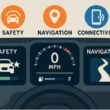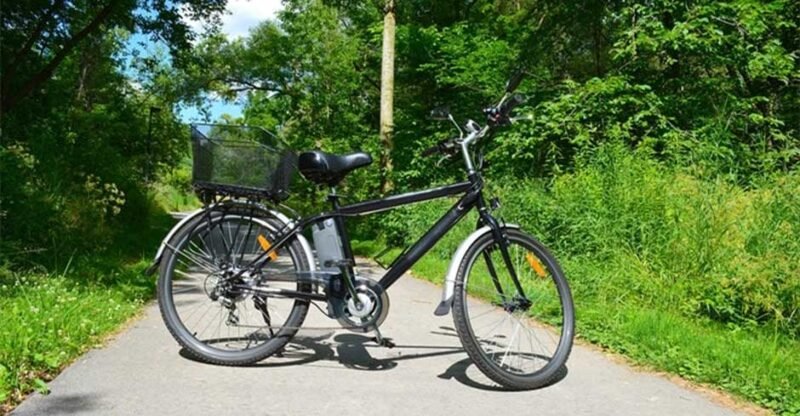The demand for electric bikes is surging, and for good reason. Whether you’re commuting to work, running errands, or enjoying a weekend ride, an adult electric bike offers a perfect mix of convenience, sustainability, and fun. However, as e-bikes for sale flood the market, many buyers make avoidable mistakes that lead to dissatisfaction, wasted money, or poor riding experiences.
In this comprehensive guide, we’ll walk you through the most common mistakes to avoid when buying an electric bike, while sharing expert insights and buying tips to help you make the right choice. If you’re serious about choosing the right e-bike, this is your starting line.
1.Not Defining Your Riding Needs First
One of the most frequent mistakes buyers make is purchasing an e-bike without first thinking about how they plan to use it.
Ask yourself:
Will you be commuting daily on paved roads?
Do you need power to handle hilly terrain?
Are you planning to carry groceries or a passenger?
Do you want a leisurely cruiser or a performance-oriented ride?
There are many styles of adult electric bikes including:
Commuter E-Bikes – great for daily city travel.
Folding E-Bikes – ideal for small spaces or multi-modal transit.
Mountain E-Bikes (eMTBs) – designed for off-road adventures.
Cruiser E-Bikes – comfortable and casual for beach or neighborhood rides.
Cargo E-Bikes – designed for transporting heavier loads.
Buying tip: Clearly identify your riding purpose before browsing ebikes for sale. This will save you time and prevent mismatched purchases.
2.Overlooking Battery Range and Capacity
A powerful motor is impressive, but the battery is the heart of any e-bike. Choosing a bike without understanding battery capacity is a major pitfall.
Key battery factors:
Voltage (V): Determines power.
Amp-hours (Ah): Determines capacity or how far it can go.
Watt-hours (Wh = V × Ah): Overall energy; directly affects range.
Example: A 500Wh battery may offer 25–60 miles depending on terrain, weight, and pedal assist levels.
Common mistake: Assuming all e-bikes offer the same range. Riders often find their e-bike dies halfway through their commute.
Buying tip: Estimate your average ride distance and choose an e-bike with at least 20% more range than needed to cover occasional detours or hilly routes.
3.Ignoring the Importance of Motor Placement
The motor placement significantly affects ride quality. There are three main types:
Front Hub Motor: Easy to install but can feel unbalanced.
Rear Hub Motor: Better traction and more natural feel.
Mid-Drive Motor: Positioned near the pedals; offers excellent weight distribution and power efficiency.
Common mistake: Buying based on price alone and ending up with a front hub motor that feels awkward on slopes or corners.
Buying tip: If you’re serious about performance and hill climbing, opt for a mid-drive adult electric bike. It’s more expensive but worth the investment.
4.Forgetting to Check Local E-Bike Laws
Electric bike laws vary by country, state, and even city. In some areas:
Speed is limited to 20–28 mph.
Class 3 e-bikes may be restricted from bike paths.
Helmets may be legally required.
Common mistake: Buying an e-bike for sale that exceeds legal wattage or speed limits in your area, resulting in fines or limited usability.
Buying tip: Always check your local regulations and choose a bike that complies. This ensures you can ride confidently without legal issues.
5.Skipping a Test Ride (When Possible)
No matter how sleek the specs are, comfort and fit should never be overlooked. Saddle height, handlebar width, frame size, and pedal assist responsiveness all affect your ride.
Common mistake: Buying online without checking sizing guides or reviews, resulting in an ill-fitting bike that causes discomfort.
Buying tip: If you’re shopping in-store, test ride a few models. For online purchases, verify the geometry, size chart, and look for brands that offer return policies or local trial programs.
6.Underestimating Total Cost of Ownership
It’s easy to get excited about a low sticker price, but the real cost includes:
Battery replacement (after 2–5 years)
Regular servicing
Accessories (locks, lights, fenders, racks)
Shipping or assembly fees
Common mistake: Buying a low-cost e-bike and spending hundreds later to upgrade the battery, brakes, or frame.
Buying tip: Budget not just for the e-bike itself but for long-term maintenance and essential accessories.
7.Neglecting Weight and Portability
Some adult electric bikes can weigh over 70 pounds, especially with large batteries and cargo racks.
Common mistake: Choosing a heavy bike that’s difficult to carry up stairs or load into a car, especially in urban settings.
Buying tip: Check the weight and make sure it’s manageable. If space and portability are concerns, consider a foldable e-bike under 50 lbs.
8.Overlooking After-Sales Support and Warranty
Not all e-bike manufacturers offer solid after-sales support. If your battery fails or the motor malfunctions, you’ll need reliable customer service.
Common mistake: Buying from obscure brands without warranty or local support—saving a few dollars up front may cost you big later.
Buying tip: Choose brands with:
At least a 1–2 year warranty
Local dealers or service centers
Good reviews for customer service
9.Choosing Style Over Substance
While aesthetics matter, don’t prioritize looks over performance. That retro-style bike may look great but might lack suspension, speed control, or quality components.
Common mistake: Picking an e-bike that looks trendy but doesn’t perform well on daily commutes or uneven terrain.
Buying tip: Balance design with function. Prioritize comfort, motor power, battery life, and braking system over color schemes and trendy frames.
10.Not Comparing Models or Reading Reviews
With so many ebikes for sale, it’s essential to compare at least 3–5 models before making a decision. Online forums, video reviews, and customer feedback offer insight into real-world performance.
Common mistake: Making a hasty purchase without proper research.
Buying tip: Use comparison tools on e-commerce sites or browse trusted e-bike review platforms. Filter by use case (commuter, off-road, city, etc.) and price range.
11.Disregarding Safety Features
Speed and performance are exciting, but safety should always be a priority. Look for:
Hydraulic or mechanical disc brakes
Integrated front and rear lights
Reflective tires or sidewall strips
Sturdy frame and wheelbase
Common mistake: Choosing a bike without reliable brakes or proper lighting, especially if you ride at night or in traffic.
Buying tip: Invest in safety now to avoid accidents later.
12.Failing to Future-Proof Your Choice
If you’re new to e-bikes, your needs may evolve. What suits you today may feel limiting a year from now.
Common mistake: Buying the cheapest option and outgrowing it quickly.
Buying tip: Choose a model with upgrade potential (removable battery, accessory compatibility, performance tuning) so you’re not stuck replacing the whole bike too soon.
Final Thoughts: Make a Smart, Sustainable Choice
Buying an adult electric bike is a significant but rewarding investment. By avoiding these common pitfalls, you’ll not only save money but ensure a safer, smoother, and more satisfying ride.
Whether you’re browsing for an e-bike for sale or trying to choose the right e-bike, always prioritize your riding style, research brands and specs thoroughly, and think long-term. A little preparation goes a long way toward joining the e-bike revolution with confidence and joy.








